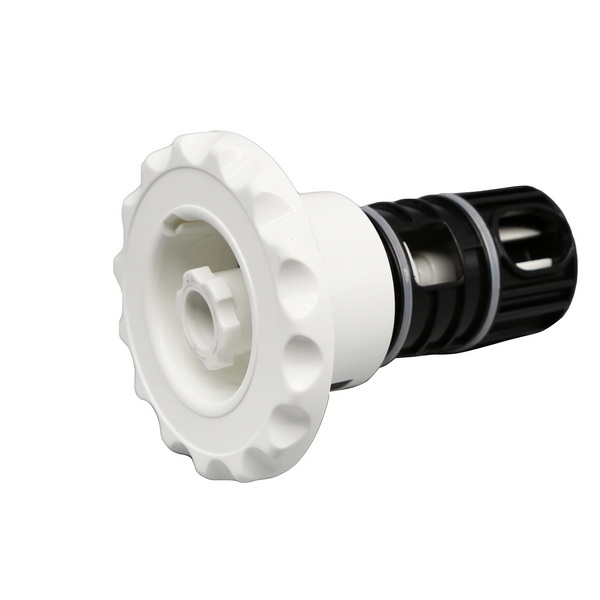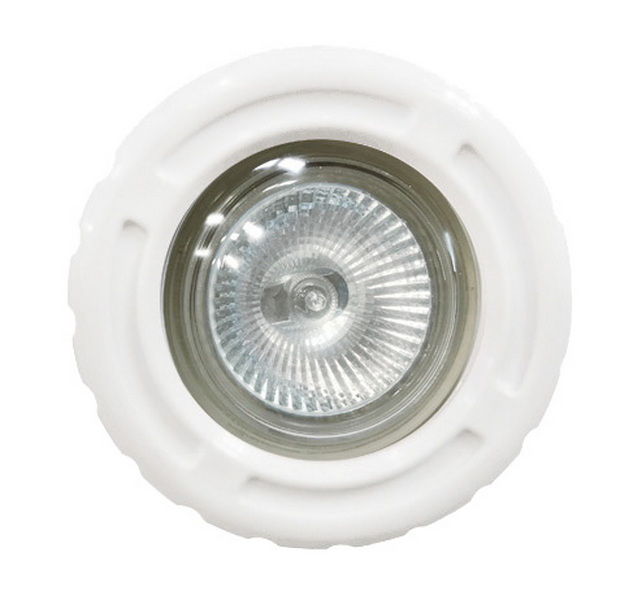Views: 222 Author: Tina Publish Time: 2025-08-05 Origin: Site








Content Menu
● Understanding Pool Return Fittings
>> The Science Behind Pool Return Performance
● Types of Pool Return Fittings
● Why Accurate Measurement Matters
>> Common Return Fitting Dimensions
● Pool Return Fitting Components Explained
● Pool Plumbing Basics and Water Flow Principles
● Step-by-Step Guide: How to Measure Pool Return Fittings
>> Step 1: Identify Your Fitting and Prepare the Area
>> Step 2: Remove the Fitting Safely
>> Step 3: Measure Inside and Outside Diameters
>> Step 4: Measure the Faceplate and Protrusion
>> Step 5: Measure Thread Length and Type
>> Step 6: Note Gasket Requirements and Wall Thickness
>> Step 7: Capture Photos and Label Measurements
>> Step 8: Consult Manuals or Manufacturer's Resources
● Advanced Tips and Pro Insights
● Troubleshooting Incorrect Fit or Flow
● Environmental and Longevity Considerations
● FAQs
>> Q1: How many return jets does my pool need?
>> Q2: What happens if I mix NPT and BSP threads?
>> Q3: Can I upgrade from 1.5" to 2" return jets?
>> Q4: Why measure wall thickness and gasket size?
>> Q5: What should I do if my measurements don't match any product?
Exact measurements of pool return fittings are the unsung heroes behind crystal-clear pool water and efficient system operation. Whether you're a DIY pool owner, a facility manager, or a commercial dealer seeking top-tier OEM filtration solutions, understanding this topic ensures proper installation, replacement, and trouble-free maintenance. In this guide, we'll walk you through the technical and practical aspects of measuring pool return fittings, share industry standards and insider tips, and illustrate each step with diagrams and recommended videos. Let's dive in!

Pool return fittings are vital elements in every swimming pool system, acting as the portals where freshly filtered water is delivered back into the swimming area. Their primary purpose is to maintain proper water movement, ensuring all parts of the pool receive treated water, and helping distribute heat, sanitizer, and chemicals evenly. By swirling water currents, return jets also drive floating debris toward the skimmer for more efficient filtration and prevent the formation of stagnant “dead zones”—those trouble spots where algae and bacteria often accumulate.
The effectiveness of a return jet is not just about water entry; it's also about flow direction and pressure. Properly measured and installed fittings:
- Aid in achieving ideal “pool circulation patterns” (often called the “circular sweep”).
- Enhance heating efficiency by mixing top and bottom water layers.
- Ensure chemical treatments reach every inch for a hygienic swim.
A poorly fitted, undersized, or incorrectly placed return can reduce circulation dramatically, leading to uneven heating, cloudy water, or recurring algae.
Knowing your fitting type is step one. The most common return fittings you'll encounter include:
- Standard Wall-Jet Fittings: Circular, often universal, and either threaded (male or female) or slip-type for gluing.
- Eyeball Return Jets: Feature an adjustable ball nozzle so you can direct the water stream exactly where you want it—excellent for fine-tuning circulation patterns.
- Floor or In-Floor Return Inlets: Used in luxury pools to boost bottom circulation, helping lift settled debris for filtration.
- Venturi Fittings: Add air to the stream for massage or bubbling effect—common in spas and therapy pools.
- Specialty Return Fittings: Such as “low-profile” for tight spots or the “Net'N'Clean”-type jets in premium cleaning systems.
Why stress over a millimeter here or there? The answer: precision in measurement is directly linked to pool health, maintenance costs, and the long-term durability of your pump, filter, and heater. Here's why exact measuring is non-negotiable:
- Water Tightness: Even slight misfits may create leaks behind the liner or shell, eventually causing structural damage.
- Proper Flow Calculation: Return jet size must match pipe and pump capacity for optimal flow. Oversized openings lead to weak flow, while undersized ones can stress the system and skyrocket energy use.
- Compatibility with Automation & Accessories: Modern automated pool cleaners and specialty jets require exact matches for seamless performance.
- Global Standards: European and North American pool fittings often use different thread types (NPT vs. BSP), so double-checking standards prevents costly returns or modifications.
- Standard residential wall fitting: 1.5" or 2" (nominal, inside diameter)
- Above-ground pool fitting: faceplate 4", body 1.5"
- Slip vs. Threaded: Confirm whether your pipes require “slip” glue-on or “threaded” screw-in installations

A return fitting is more complex than it looks at first glance. Its anatomy usually includes:
- Faceplate: The visible, usually round section flush with the pool wall, often decorative.
- Wall Body: The midsection that fits through the pool wall or liner and anchors the entire assembly.
- Eyeball or Nozzle: The directional flow adjuster.
- Locknut/Ring: Secures everything in place, sometimes hand-turnable.
- Gasket(s): Ensures a leak-proof seal, especially in vinyl-lined or above-ground pools.
Understanding the basics of pool plumbing helps clarify why fitting size and placement matter. The system works in a loop:
1. Water is drawn from the pool via the skimmer and main drain.
2. It passes through the pump, filter, and heater (if installed).
3. The filtered, treated water returns via the return jets.
Hydraulic balance means the volume of water leaving via return fittings matches that being drawn in by the pump. Too many or undersized jets impede this balance; too few create strong jets but can miss spots in the pool.
Having the right tools prevents guesswork and accidental poolside trips to buy missing items. Here's your complete tool list:
- Tape Measure/Ruler (imperial and metric)
- Caliper (for inside/outside diameter, high accuracy)
- Thread Gauge (identifies NPT vs. BSP threading)
- Flashlight (see in/outside pool wall details)
- Notepad/Marker (jot down or mark measurements)
- Camera/Phone (photo record for comparison/shopping)
- Rubber Gloves (for grip and pool chemical safety)
Consider a “fitting sample” from your pool supplier for difficult cases—matching by sight or trial is sometimes handy.
Turn off all pool equipment before starting. Visually inspect your fitting—does it have a visible faceplate or exposed threading? Take “before” photos for reference.
Most wall jets can be unscrewed by hand or with a strap wrench. For older or corroded fittings, use penetrating oil or consult a professional.
- Inside Diameter (ID): The most critical measurement—place your caliper or tape inside the opening (where the water comes out) and record to the nearest 0.5mm/1/32".
- Outside Diameter (OD): Measure the widest distance across the threads or pipe body for reference.
- Line up the tape across the circle of the faceplate.
- Record how far (if any) the fitting sticks out from the pool wall or liner. If protrusion interferes with an automatic cleaner or pool cover, opt for a low-profile replacement.
- Count the visible threads; more threads mean a stronger, leak-resistant fit.
- Determine thread direction and type. North American fittings use NPT (tapered), while some imports use BSP (parallel or tapered)—mixing these leads to leaks.
- For “slip-on” types, measure the *receiving* pipe outer diameter as well.
Gaskets are critical for preventing leaks in vinyl or above-ground pools. Measure:
- Diameter of the gasket seat
- Thickness of the gasket
- Thickness of the pool wall/liner at the point of fitting installation
Photograph each measurement with the tape or caliper in view—this helps double-check accuracy and compare with online product listings or specs.
Compare your measurements to charts/details from pool OEMs like Pentair, Hayward, or Waterway. If you're unsure, contact customer support with your details and photos for confirmation.
- Directional Flow Optimization: Position eyeball-style jets slightly downward and toward the skimmer for superior debris removal and heating efficiency. Pools with complex shapes (L, kidney, freeform) may benefit from a few extra jets, each directed by design.
- Energy Efficiency Tip: Fittings that match your pump and pipe size reduce head loss (flow resistance), meaning your pump can run at lower speeds, saving up to 30% on energy costs.
- Saltwater Pools: Choose corrosion-resistant fittings—look for marine-grade stainless steel or specialty plastics for longevity in salty environments.
- Upgrading Fittings: If your pool frequently sees cloudy water or uneven heat, a professional upgrade to larger or multi-directional jets can vastly improve performance without major plumbing work.
Common Problems and Solutions:
- Leaking at the Return Jet: Check gasket compression and whether threads match your pool's spec. Consider using Teflon tape with threaded installations.
- Poor Water Circulation: Try repositioning adjustable jets for better flow, or consider adding more returns if your pool's surface area has dead spots.
- Noisy Fittings: Whistling or gurgling may mean the fitting is undersized or partially blocked; check for debris and re-measure.
- Persistent Algae: Look for “dead zones”—areas of the pool with poor movement. More or better-fitted returns can significantly help.
Today's pool market values sustainability and long service life. Here are some ways accurate measuring and fitting choice make a difference:
- Minimizing Water Loss: Well-fitted returns mean zero leaks, saving thousands of liters over a season.
- Material Recycling: Many fittings are made from recyclable ABS, reducing landfill waste.
- UV Resistance: UV-stabilized materials last longer; double-check manufacturer specs if your pool is outdoors.
- Easy Upgrades: Properly measured and installed fittings are easier to replace or upgrade in the future, reducing downtime and waste.
Accurate measurement of pool return fittings is the key to efficient, trouble-free pool operation—delivering ideal circulation, chemical dispersion, and durability whether your pool is small, commercial, or a luxurious custom build. Start by identifying your fitting type, gather precise measurements using the outlined tools, and cross-check with manufacturer specifications. Remember—investing time up front saves headaches, wasted energy, and costly leaks down the line. If in doubt, contact a professional for guidance. With the right approach and components, your pool will stay clean, healthy, and welcoming all season long!

A: Generally, one jet per 160sqft/15m², but factors such as shape, depth, and water features may call for more. Consult your installer for a custom evaluation.
A: You'll get leaks and a poor fit almost immediately—they're not compatible. Always check both thread type and diameter.
A: It's possible but may require new pipework and higher-flow pump/filter. Larger jets can increase circulation but need proper matching to your entire system.
A: For leak prevention and structural security—vinyl liners especially require a precise gasket fit to avoid costly water intrusion damage.
A: Share your measurements and photos with your pool supplier—many offer custom or hard-to-find fittings. Some older pools may use “legacy” sizes.
